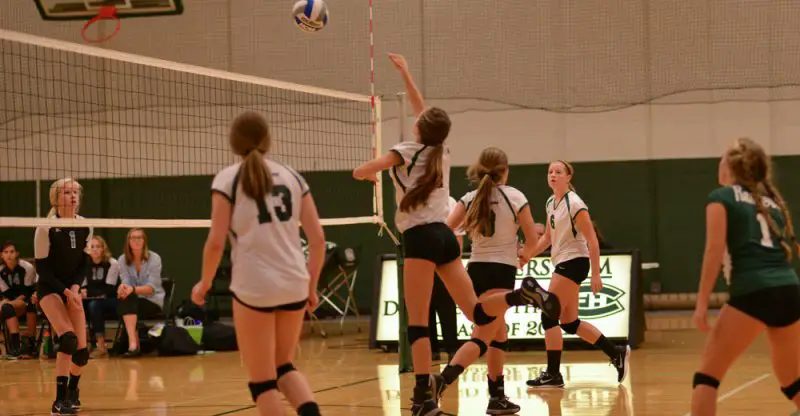Which Volleyball Position Should I Play?
In volleyball, there are five positions to choose from: outside hitter, middle blocker, setter, opposite hitter, and libero.
Deciding on which position you should play ultimately comes down to two things: the position you’re most passionate about, and your physical and technical strengths.
Passion
Unfortunately, despite its importance, the position someone is most passionate about is often overlooked by coaches and even players themselves.
But it is so important and shouldn’t be overlooked because the more passionate you are about a certain position, the more motivated you will be to practice. You will likely put in the extra effort to really improve – and we all know that motivation is such an integral part of getting good at anything, including volleyball.
At the end of the day, both players and coaches will benefit from a player who is able to play in their preferred position.
Physical & Technical Strengths
If you’re new to volleyball you might not know which position you are most passionate about. That’s perfectly fine. In time you will learn which position you prefer.
In any case, there is often a strong correlation between the position you’re most passionate about and your physical and technical strengths. We all tend to like something the better we are at it, right?
So, let’s take a closer look at each position and what makes a player really excel when playing there.
Outside Hitter
Think of the outside hitter position as the catch-all or the generalist. A player who does best in this position tends to have few weaknesses and is just as comfortable at serve reception as they are at blocking, hitting, and passing. modafinil online india https://lustfel.com/
The best outside hitters are also agile and have a good understanding of the game because they need to move quickly into position to hit the ball.
Middle Blocker
Anyone who plays as a middle blocker needs to read the setter well so they can get in position and put up a solid block. They also play a key role in the offense as they attack the ball, and cover other hitters at the net.
Physically speaking, middle blockers are the tallest players on the team yet also have great lateral movement and quick upper body reflexes.
Setter
Think of the setter as the quarterback of the team. This means that they need to have an excellent understanding of the game and know their teammates better than anybody else. They should also be willing to take on a team leadership role and have the ability to communicate well with others.
In regards to technical skills, a great setter usually has excellent ball control and is able to set and dig well too.
Opposite Hitter
The best opposite hitters are just as comfortable at hitting in both the front and back row as they are at blocking the opposition’s best outside hitter.
Outside hitters don’t require as much technical skill or to be as good at reading the game as some of the other players on the team. What they do need, though, is power, jumping ability, and the focus and ability to get really, really good at what is required of them.
Libero
If you want to play the libero position, you definitely shouldn’t be a glory seeker. Paradoxically, you shouldn’t mind attention either. This is because liberos wear a different colored jersey and will stand out yet also tend to be underappreciated.
As liberos play in the back row and do not attack the ball, they won’t make the highlight reel for a flashy block or for scoring the match-winning point. Liberos, therefore, tend to be underappreciated by casual fans but certainly not by the coach, their teammates, and anyone who has a good understanding of the game.
Liberos are highly technical players who need to have excellent ball control and are comfortable at passing, digging, and setting. Due to the agility required to play this position well, liberos tend to be on the shorter and smaller side too.

